Lamu: What A Whole Vibe!
The Manda airport is quite small so it was easy to find Hassan. He was wearing a faded yellow t-shirt and a pair of knee length khaki shorts. While his head was adorned with a Kofia (brimless cylindrical hat worn by men in East Africa), he was barefoot.
He had a piece of paper with my name and I stepped towards him half-lifting/half dragging my suitcase with one broken wheel. Hassan came forward and with a wide smile he said ‘Welcome to Lamu.’ His smile exposed his teeth and the gaps told stories of a few extractions. His smile was warm and his eyes were kind, and I had a feeling I was in good hands. Without another word, he hoisted my suitcase onto his shoulder and off we went to the jetty to catch a ‘Lamu Uber’ – a boat- onto the other side where Lamu’s white washed buildings beckoned.
How Did I End Up In Lamu?
Technically, I arrived on a Fly54 flight from Nairobi! The truth is, Lamu came on my radar in 2016 and 2017. I’d known of Kenya’s coast for years – of Mombasa, Watamu, and Malindi. But Lamu? I only found Lamu on Instagram (I know!!) and the more I learned of it, the more intrigued I was. So, when it came time to decide on where to spend my last 4 days on a trip of a lifetime, I ditched my 15-year long distance relationship with Mombasa for Lamu.
Lamu Town – First Impressions
As Hassan and I walked through the narrow streets of Kenya’s oldest settlement, I felt as though I was in a different time entirely. There really are no cars here, as the streets cannot fit them. They’ve kept it this way in efforts at preservation. Instead, you’ll find a Donkey Sanctuary (Donkey hospital) and donkey traffic. Lamu’s Old Town is the oldest and best-preserved Swahili settlement in East Africa, retaining its traditional functions. It’s no wonder it is a UNESCO World Heritage Centre.
However, there are motorcycles these days too.
It was Ramadan, and Lamu town is predominantly Muslim so restaurants were quieter. Hassan navigated the narrow winding streets like only a local would as I tried to remember landmarks. Oh, I almost stepped on Donkey poop a few times.
We walked to the market situated outside the fort and bought mangos and passion fruit at the market, passed by the ‘BeyonceRihanna’ shop (remember the Instagram Salon I saw in Kigali?), passed heaps of second hand clothing on the floor for sale (I sorted through these growing up :)) .
At Iftar, the streets came alive with so many street food options and the vendors (mostly male) were quick to offer me a free trial. I tried foods I can’t name but bought Samosas to go. Locals were friendly and many took the time to just chat, I heard ‘pole-pole’ a few times. I slowed down a bit each time.
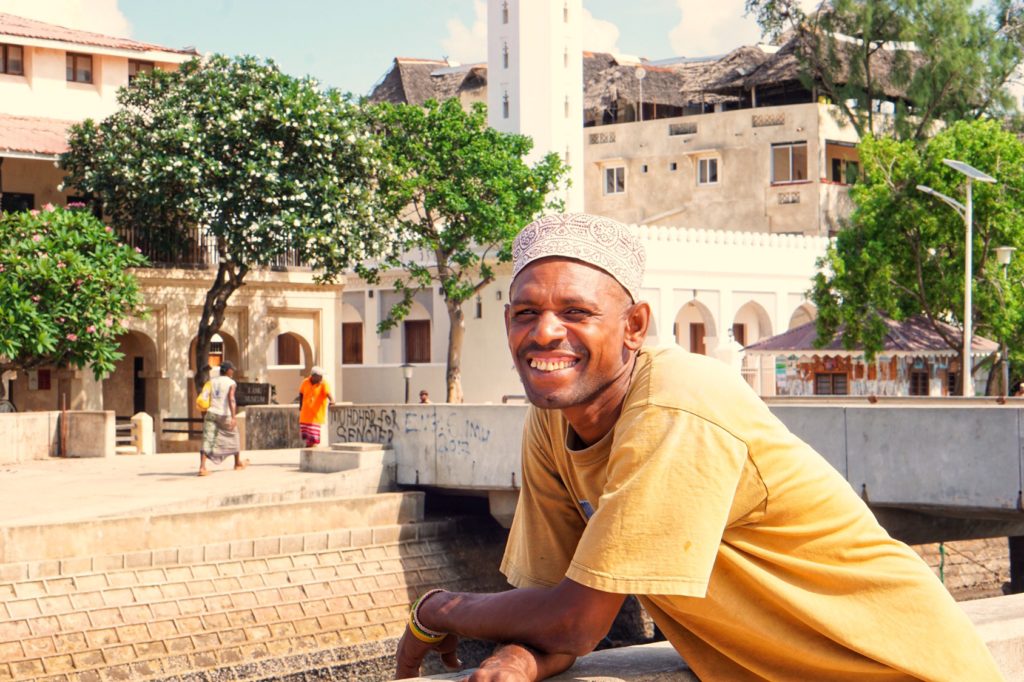
Swahili Culture & Architecture
The Swahili culture and people represent the unique combination of the influences of Omani Arabs, Turkish traders, Portuguese explorers, Indian, and then native Africans. Through all of this, Lamu developed and preserved its own unique culture. But can we talk about Swahili architecture? I was intrigued before I arrived and I left totally obsessed with it.
There’s a flow to the buildings here that’s effortless yet well thought out. For example, there’s a place for visitors to sit as they wait to be let into the main entrance of a Swahili home or to conduct casual business with the owner without disturbing the other inhabitants of the home. The buildings are made with natural and local materials. The coral stone buildings with thick external walls, high ceilings, and small windows keep inhabitants cool without the need for air-conditioning. Locally harvested mangrove poles are used as beams.
The entrance to these houses are unassuming, with the doors as the only indicators of the inhabitant’s wealth. These doors are the most beautiful hand crafted doors I have ever seen. I want one but until I can afford it, I settled for a sign above my bed made by a local artisan, it says ‘Lala Salama’ and it means ‘sleep well/goodnight!’ Swahili architecture can also be found in Zanzibar, Mombasa, and Comoros.
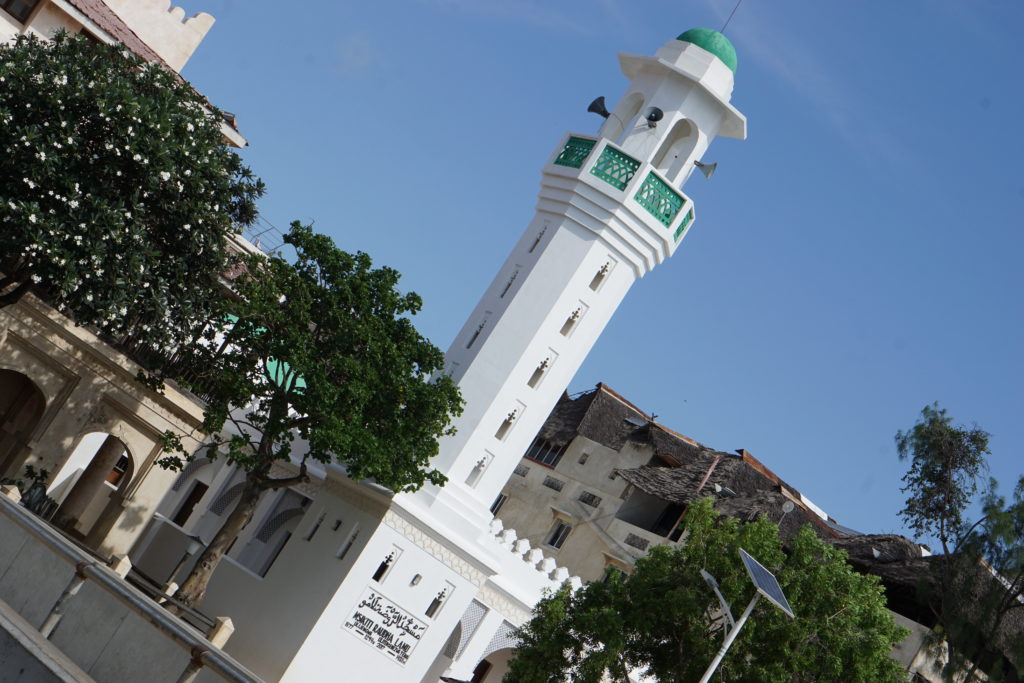
The Main Mosque 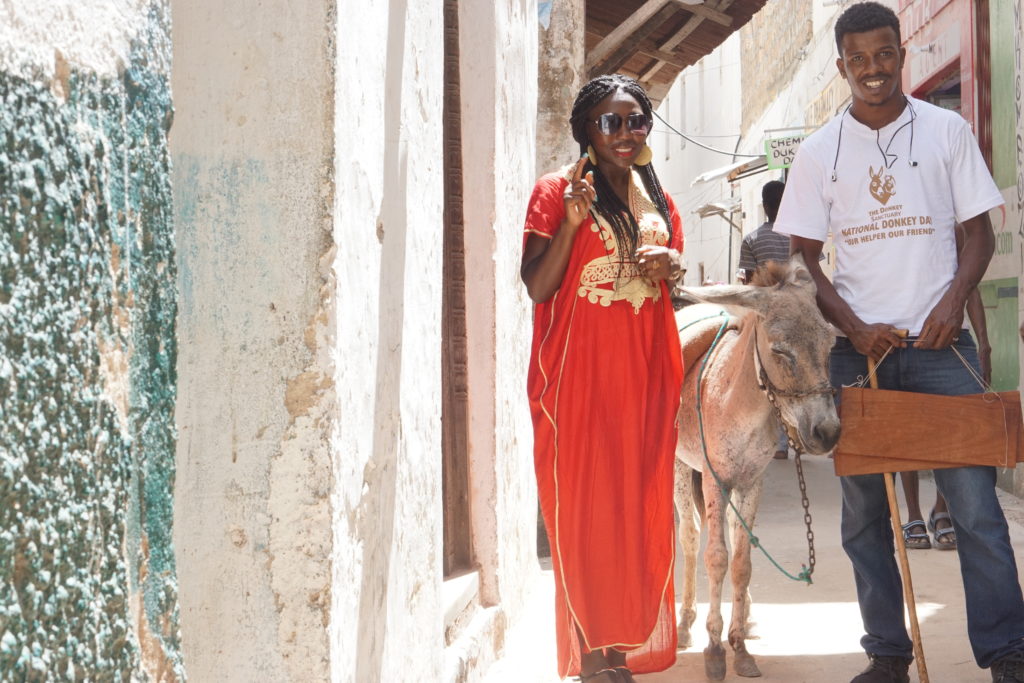
Not sure of what I was saying, but I was hanging out with ‘Handsome’ and his owner 
Samosa, my fave! 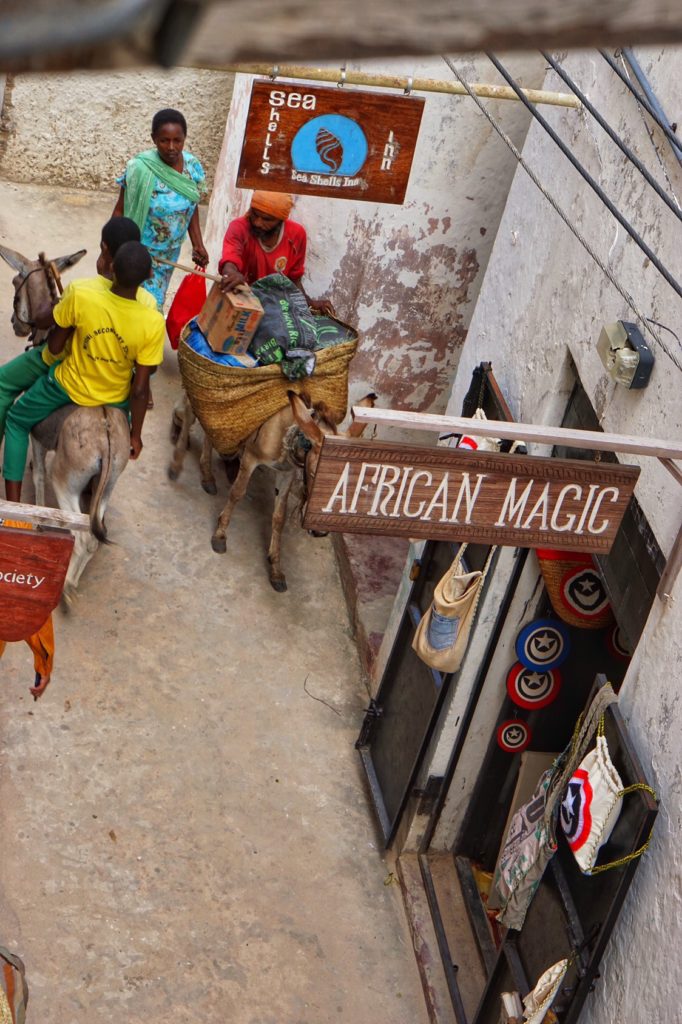
Lamu Traffic from Lamu Museum
Go To Lamu If:
History and preserved culture has found the perfect combination here, go to Lamu if you’ll appreciate this. While the beaches at Shela should suffice, if you’re strictly looking for Kenya’s very best beaches, try the other coastal towns. Go to Lamu if you won’t turn up your nose at the donkey poop you’ll almost step in. Go to Lamu if you’re willing to take things a little slow.
Where To Stay in Lamu
Since I was solo, I stayed in Lamu’s Old Town to be closer to the locals/action and this is where the magic is (in my opinion). However, many visitors stay in Shela. Shela, (2 miles from Lamu town) is a centre of tourism on the island due to the ease of access to best beaches on Lamu Island. There are several Swahili homes in Shela crafted to rent to groups. It’s easy to get to Lamu from Shela.
I rented a room in a Swahili style house now rented as an Airbnb. It was slow season and I was the only guest so I had all three floors to myself. There are several Airbnb and hotel options in town. Whatever you do, whether you rent a house, room, or hotel, you must stay in a Swahili style accommodation of some sort!
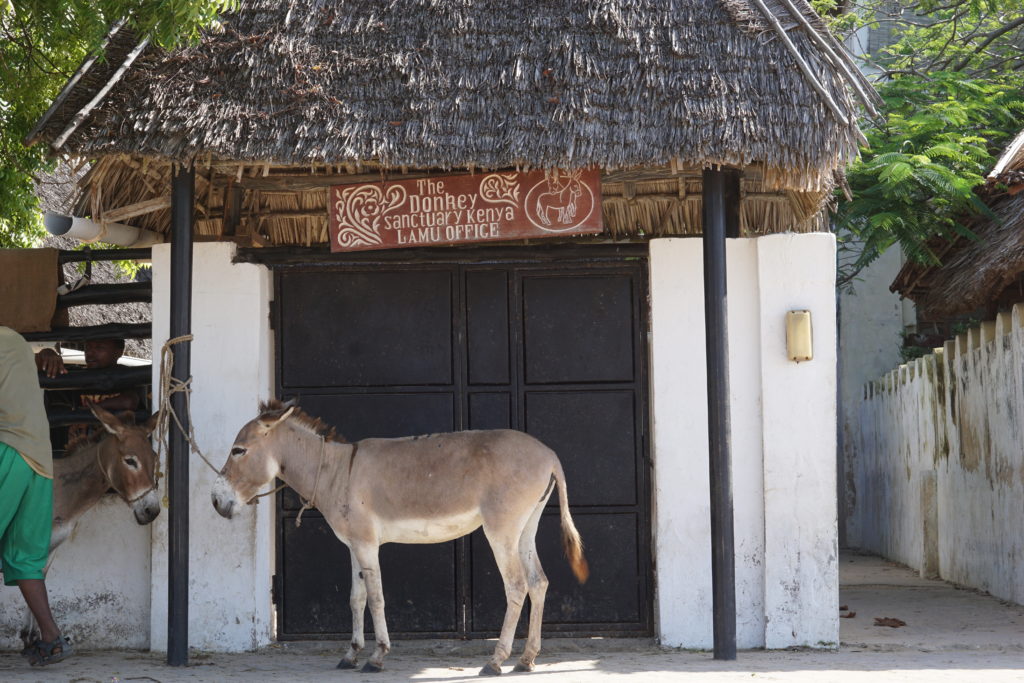
Things To Do in Lamu
- Visit beautiful historic buildings in Lamu’s Old Town such as the Lamu Museum, and Lamu Fort
- Sail into the sunset on a dhow
- Check out a rooftop restaurant
- Spend a day out at Majlis resort on Manda Island … a STUNNING property that allows for day guests. I had an amazing Thai mango salad here and I don’t even like salads
- Have a drink at the local floating bar
- Visit Pate or Siyu islands
- Have a nice meal or sundowner at Peponi hotel in Shela village
- Visit Tarkwa ruins, go snorkeling or fishing on a Dhow trip
- Pole-pole (slow, slow)
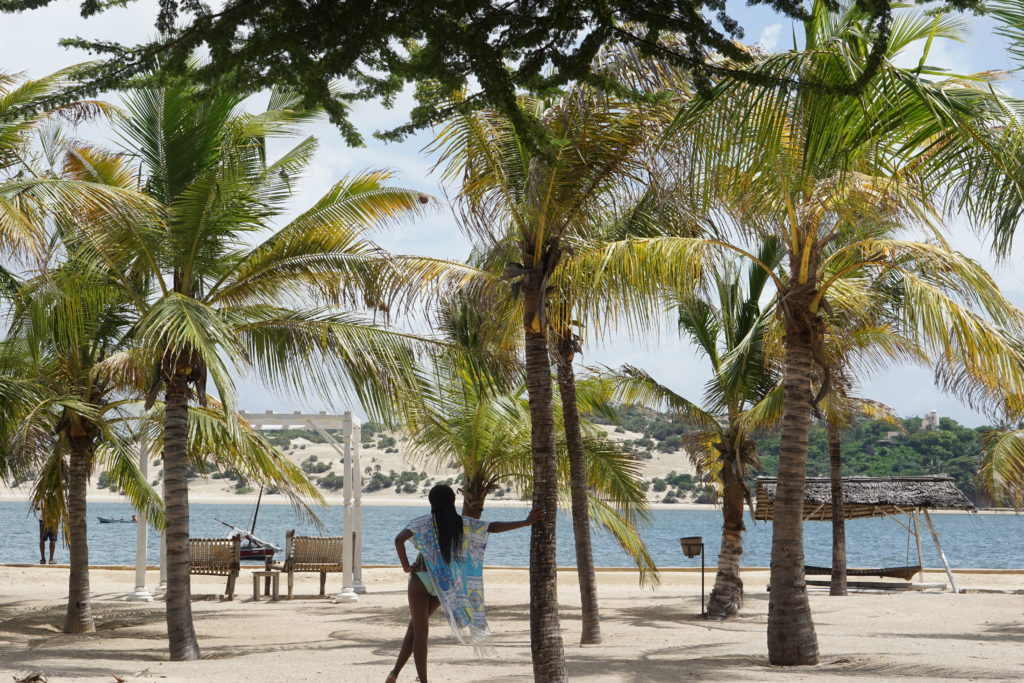
Day at Majlis Resort on Manda Island 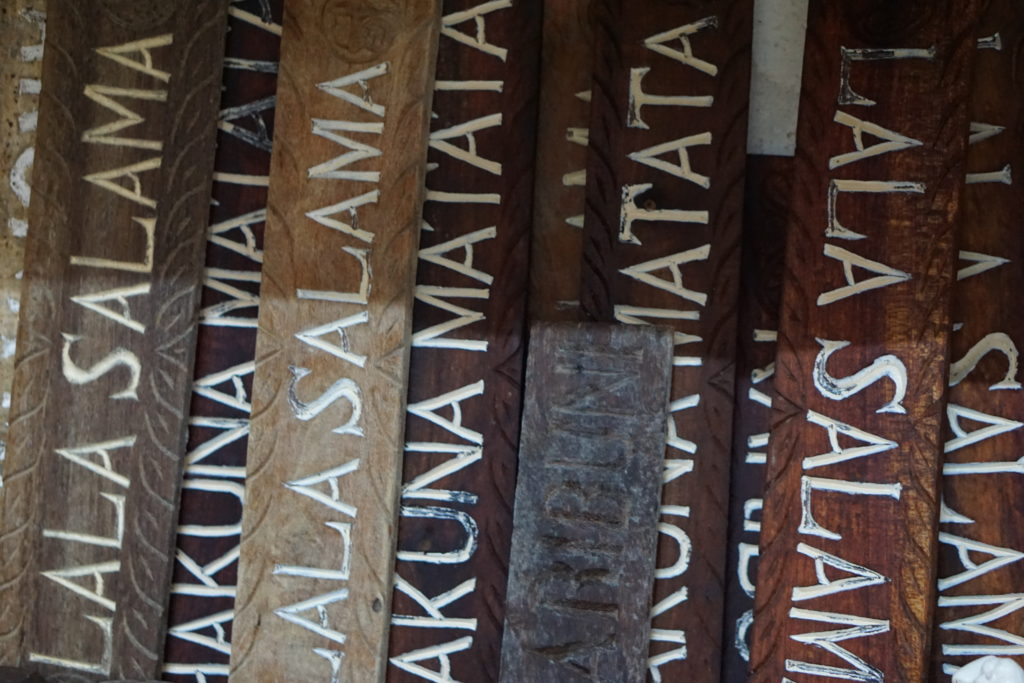
Signs for Sale 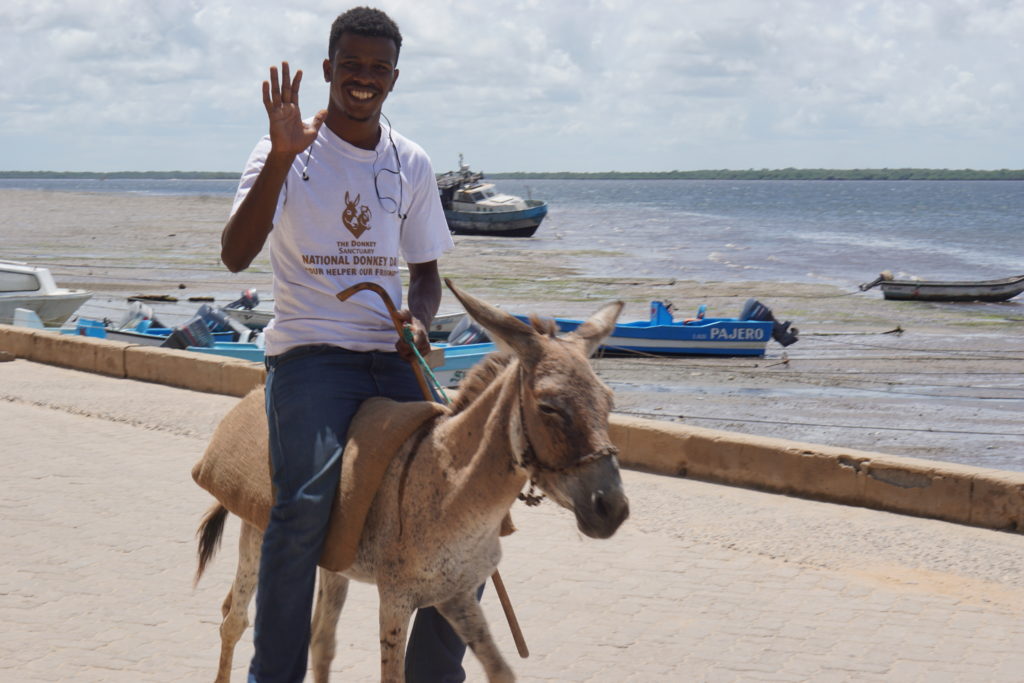
Handsome and his owner 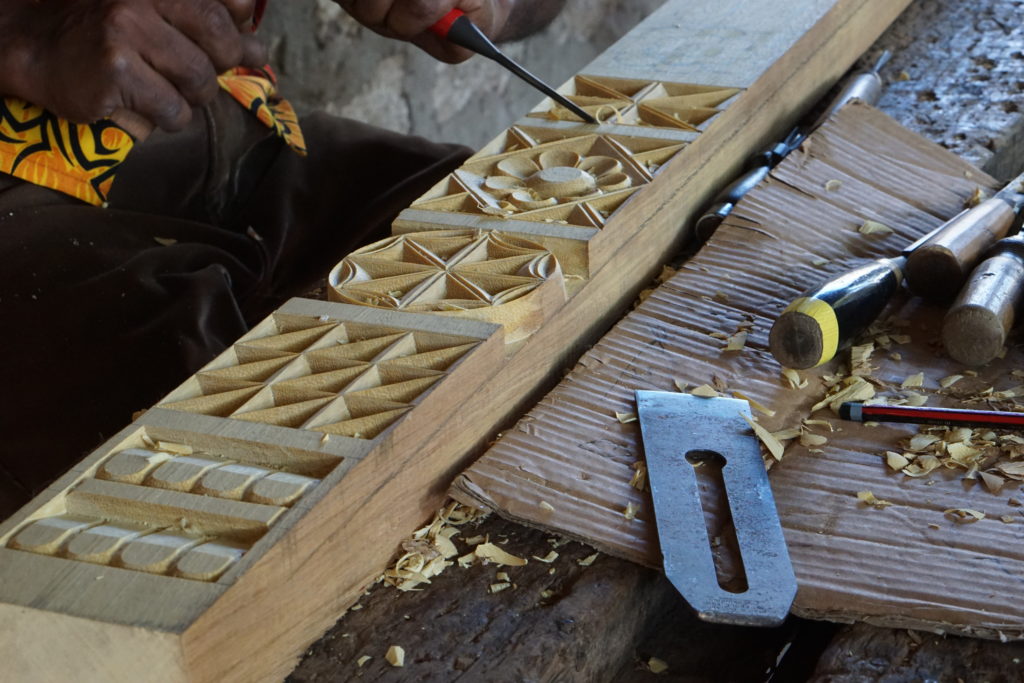
Artisan at work 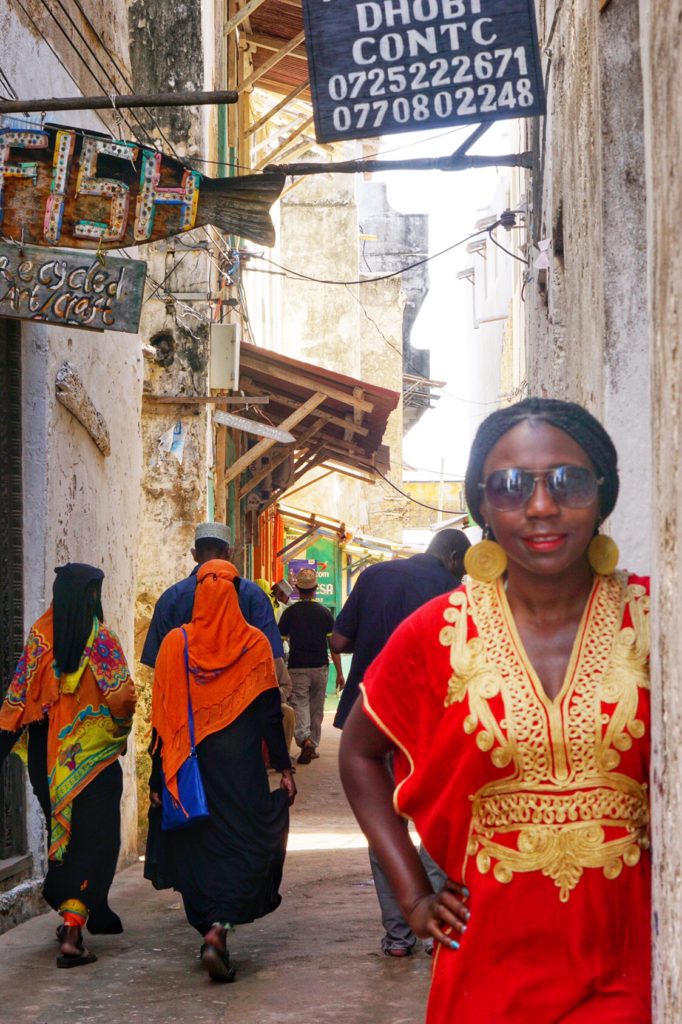
In these Lamu streets 
Alone at Lamu Fort
Leaving Lamu
When it finally was time for me to leave Lamu, I’d made a few acquaintances near the Jetty (from my daily walks along Harambee avenue – the main street in town) and they waved goodbye.
Instead of a boat, we went in Hassan’s small dhow this time. This Dhow was passed down from his father and he hopes to pass it down to his own son. Dhows are slower than the smaller speedboats but it didn’t matter. It didn’t feel right to leave in anything other than a dhow.
‘Pole Pole,’ Hassan said as I stepped into the Dhow. We set sail but I kept my back to Manda island and the airport and fixed my gaze on Lamu Town, taking mental pictures of this magical place. I can only hope that new development plans preserve quintessential Lamu.
There’s an effortless rhythm to life in Lamu. It’s in the way the ocean breeze wafts through the homes. It’s in the leisurely walks along Harambee Avenue, and the click clack of the donkeys through the narrow alleyways. You see it in the patience of the artisan taking days to make the most beautiful ornate doors. It’s in the way the dhows ply the waters, and it’s definitely in the gait of its inhabitants.
Lamu is beauty in simplicity, it is mystical, and idyllic and frankly there’s no place like it!
See here for my 10-day Kenya itinerary and here for my post on getting stuck in Maasai Mara. If you’ve enjoyed this post, please subscribe here to receive notifications when new posts are published weekly.
Till Next Week,
Ms. Heels
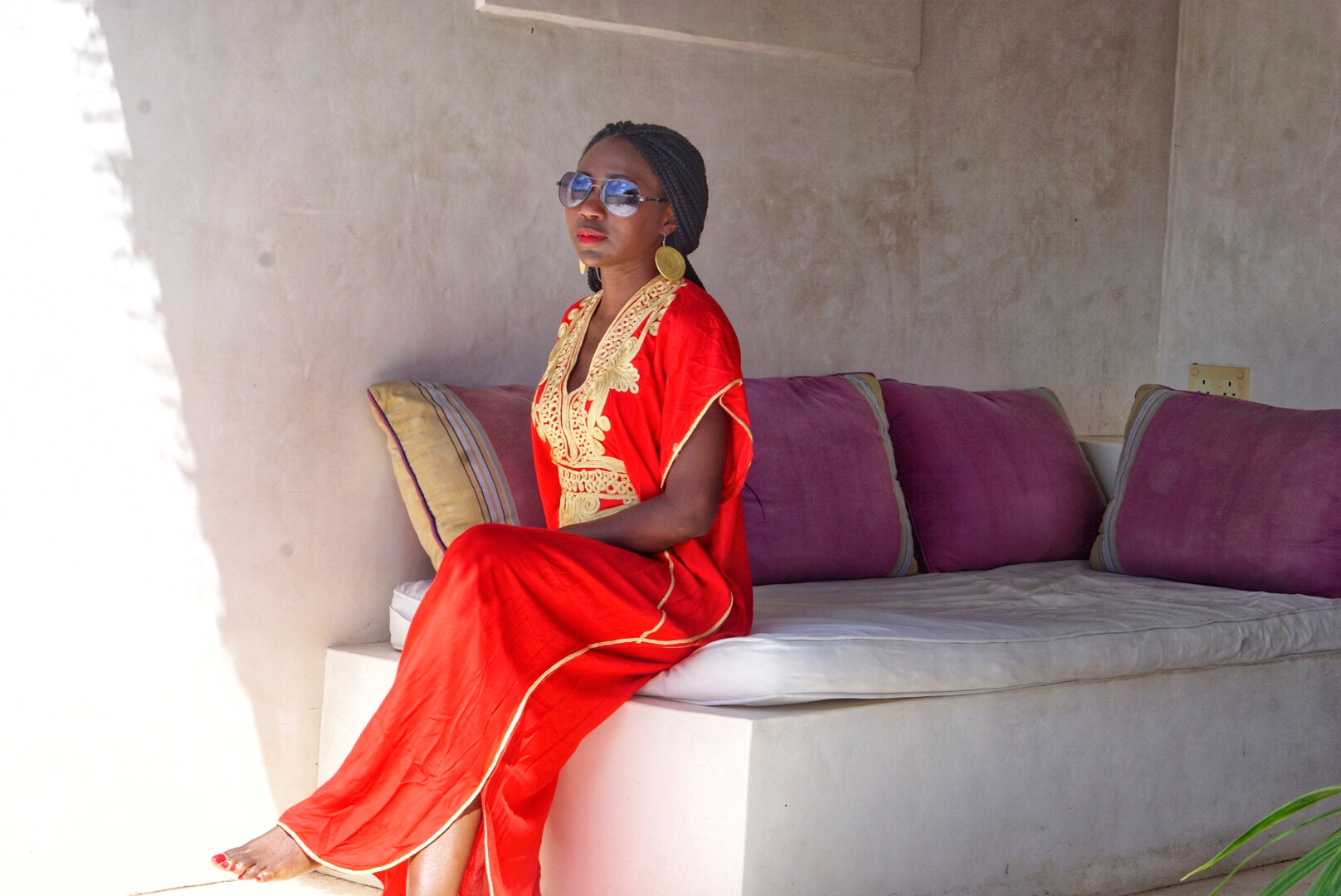
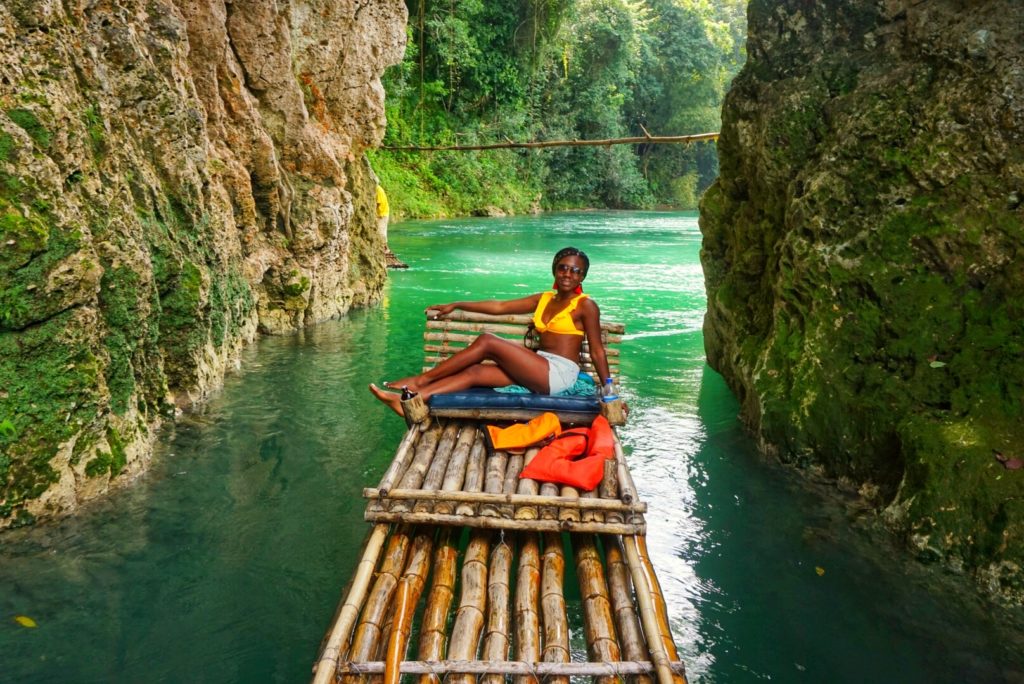
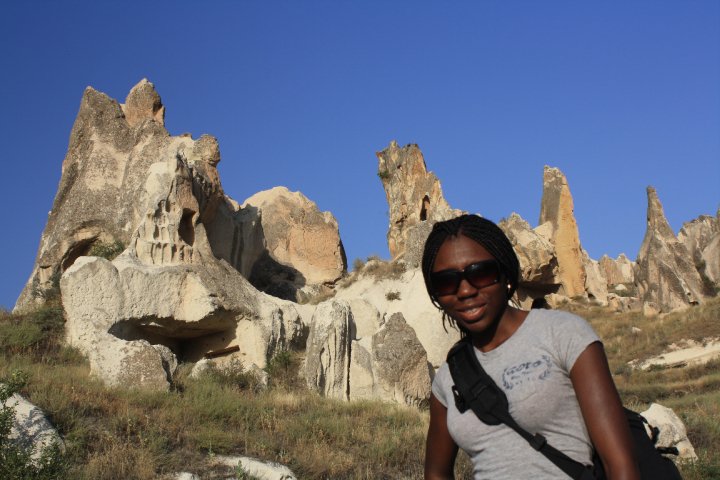
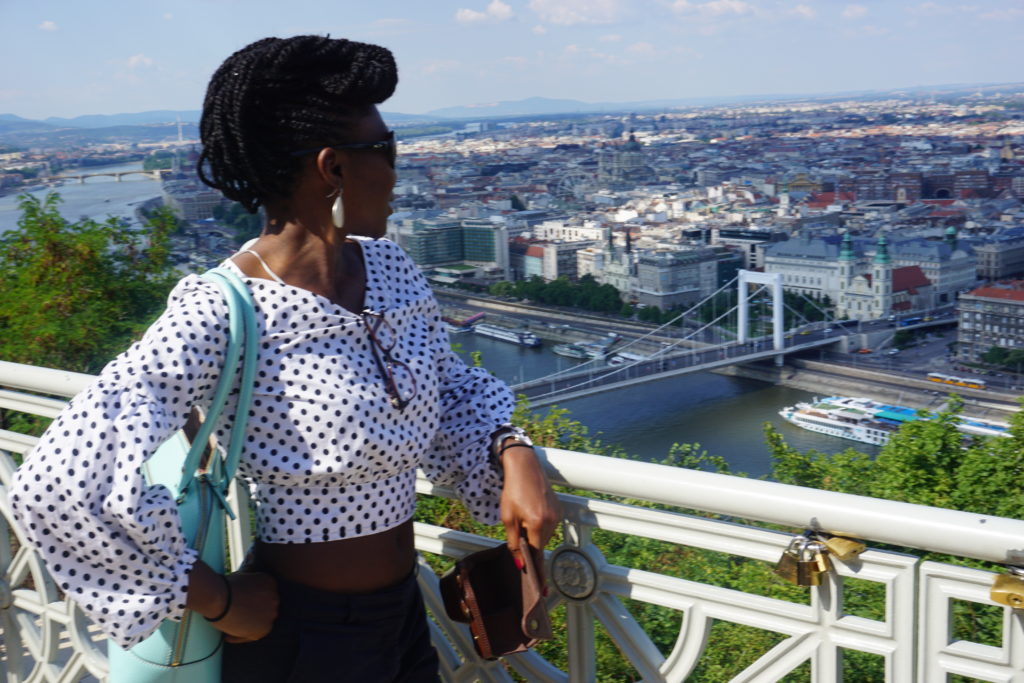

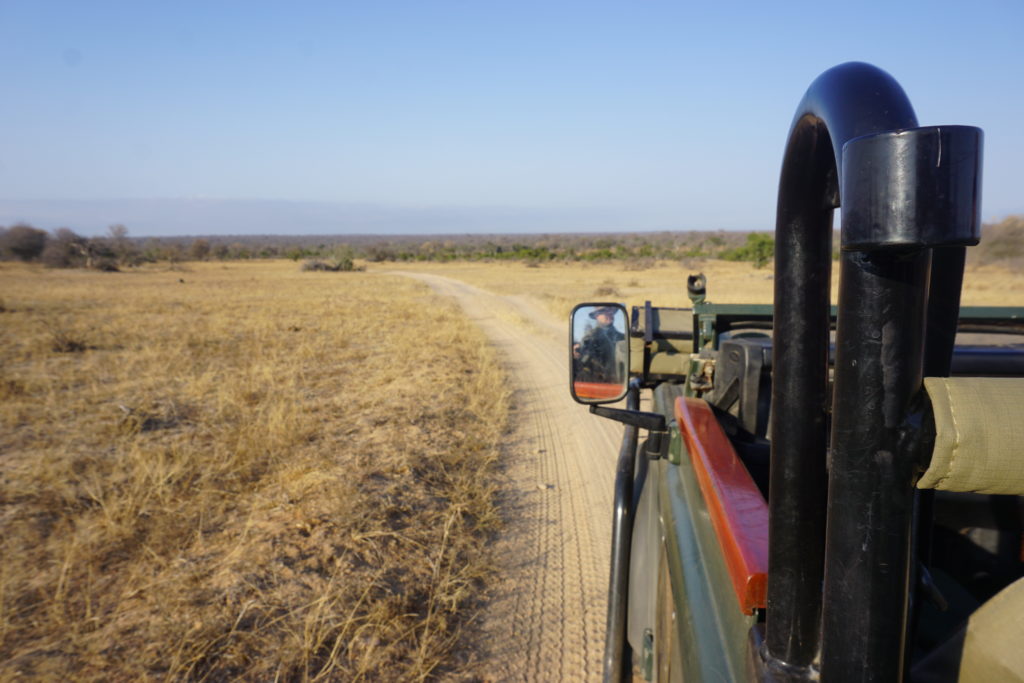
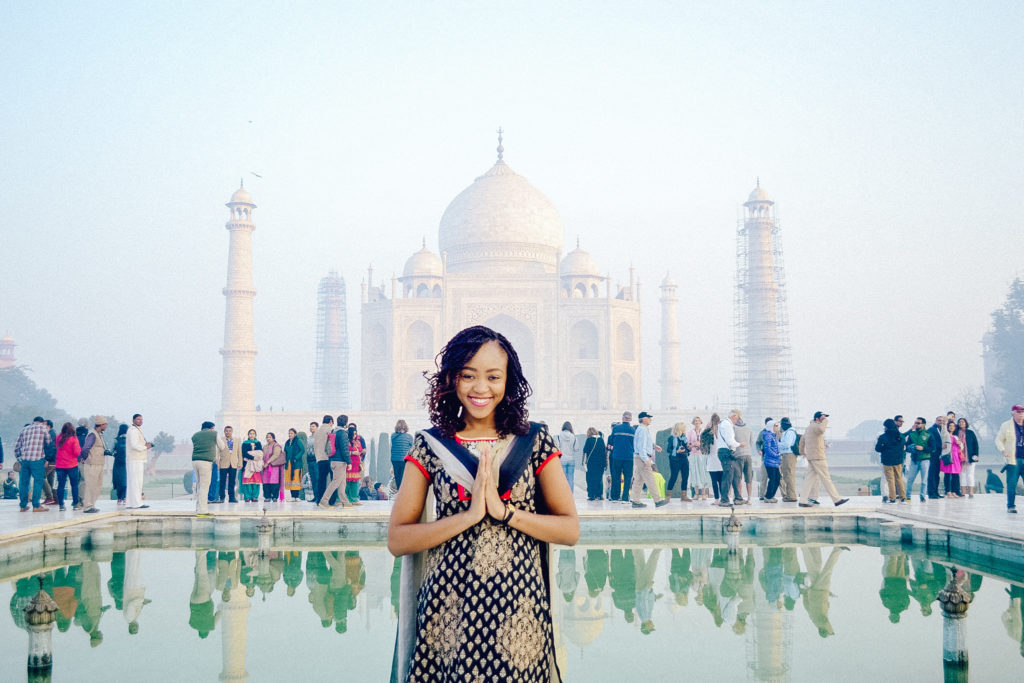
Yes! In all the ways YAAAASSS can be said. I am going to LAMU
Hehehe I’m coming back with you !